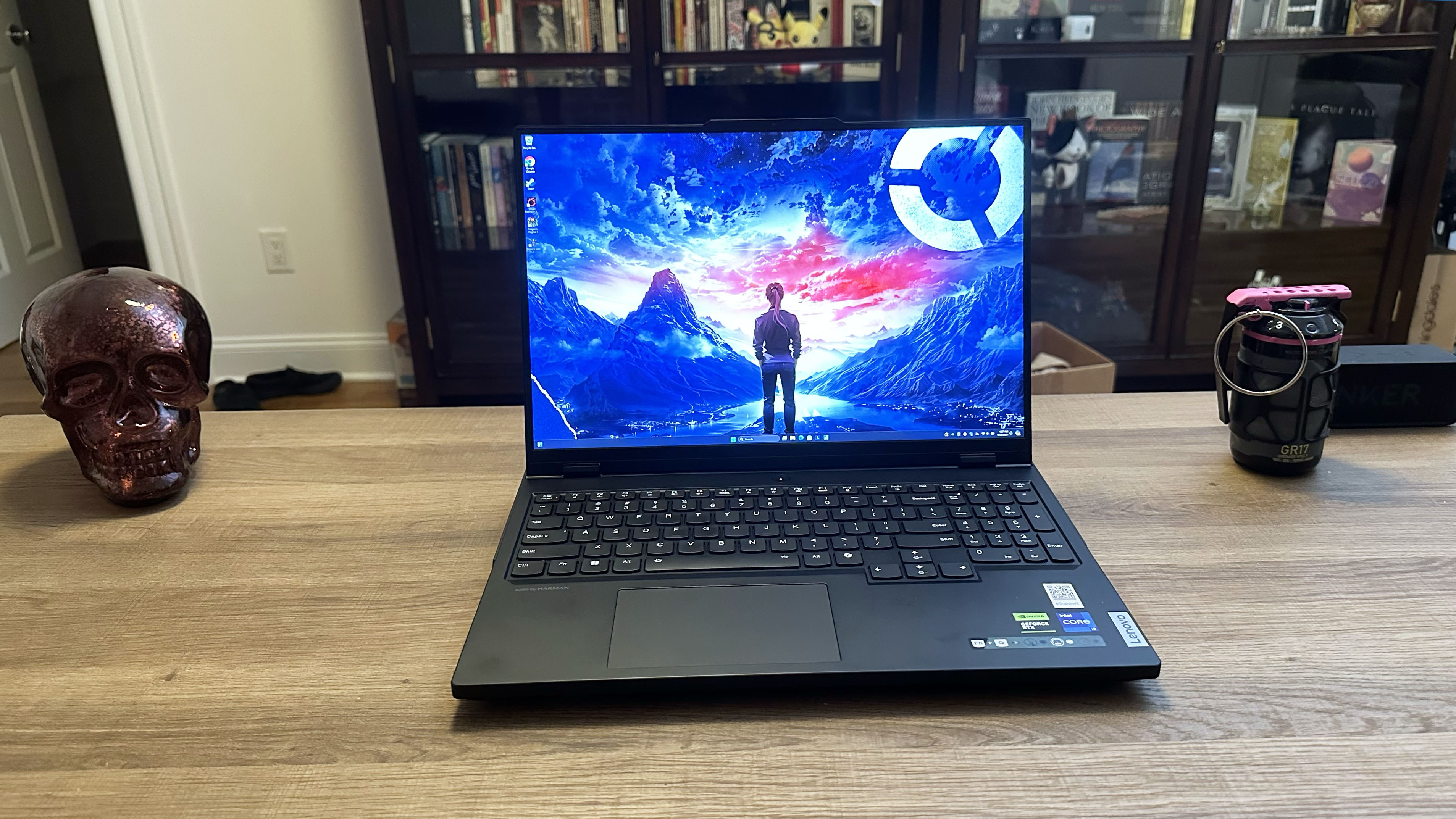
Gaming laptops aren’t all created equal. Some are budget-friendly computers with a discrete GPU; some are desktop-replacement monster machines with more performance power than you can ever need. And somewhere in that range of gaming laptops lies the Lenovo Legion Pro 7i (Gen 9).
This 16-inch laptop is somehow streamlined and chunky at the same time. It boasts a 14th-generation Intel Core i9 processor and Nvidia RTX 4080 laptop GPU to give you a desktop replacement laptop that can be more easily moved than the 18-inch gaming behemoths.
With powerful performance, smooth graphics, a stunning display, and loud speakers, the Legion Pro 7i has plenty to recommend. Unfortunately, it also struggles a bit with worse battery life than last year’s Legion Pro 7i and is just a bit heavier.
Lenovo Legion Pro 7i (Specs)
Lenovo Legion Pro 7i (Gen 9): Price and configurations
There are a few configuration options for the Legion Pro 7i, though the base model gives you a decent amount of power. For $3,155, you get an Intel Core i9-14900HX processor, Nvidia GeForce RTX 4080 GPU, 16GB of RAM, and 1TB of storage.
You can upgrade to an Nvidia GeForce RTX 4090 for an additional $695, while an upgrade to 32GB of RAM costs $90 more. You can also add 1TB of SSD storage for $195, while the switchable keycap kit will set you back just $20 more.
Our review unit came with the 32GB memory upgrade, with an Nvidia RTX 4080 GPU and 1TB of onboard storage for $3,228.
Lenovo Legion Pro 7i (Gen 9): Design
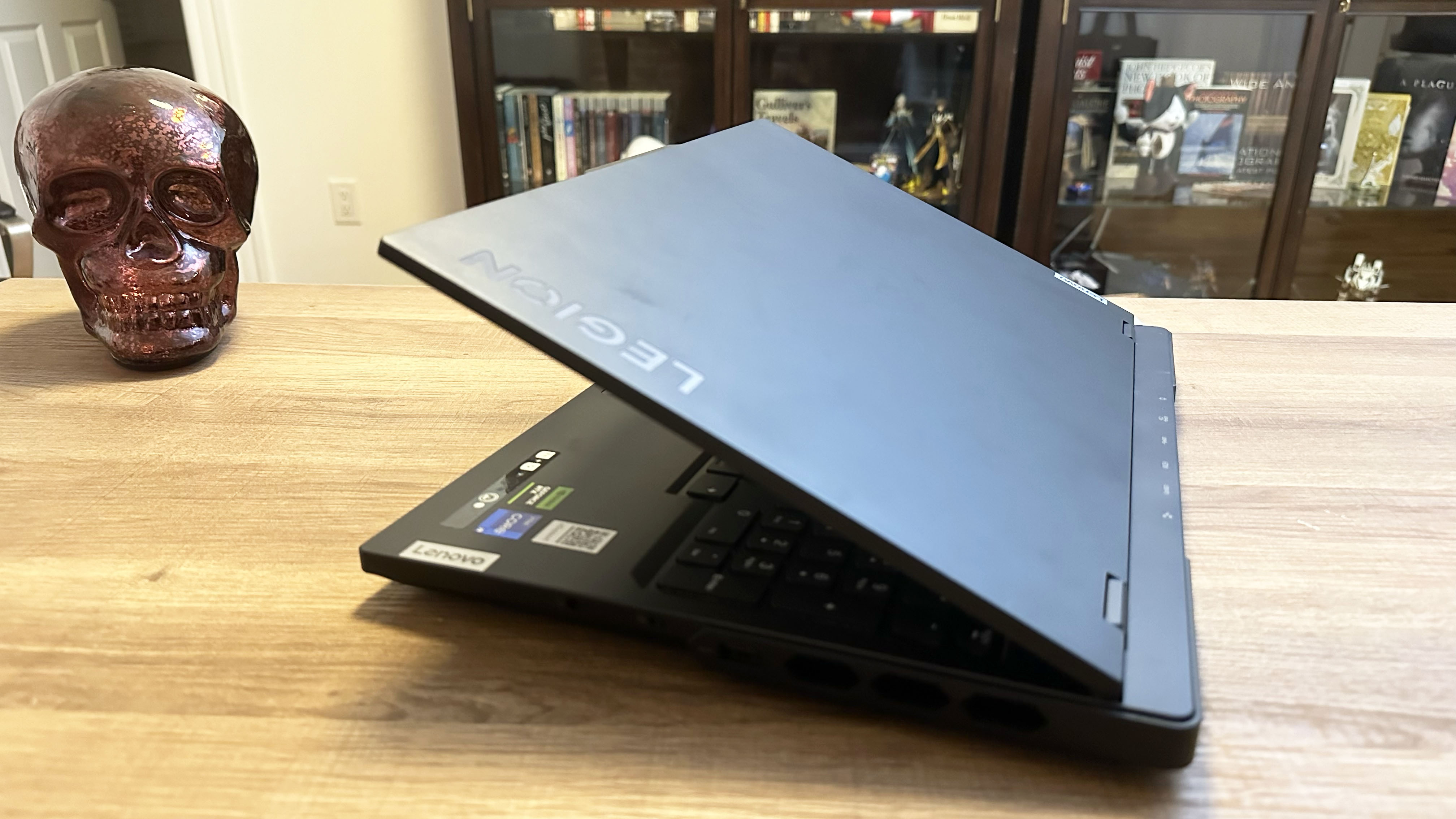
The Lenovo Legion Pro 7i has been a rather chunky laptop for a few generations now. However, the premium soft-touch plastic on the chassis elevates the Legion to something almost worthy of the “Pro” name. The lid is prone to picking up fingerprints and smudges, which is perhaps my biggest issue with the overall design.
While I personally prefer a gaming laptop that’s a bit more portable, the 16-inch form factor does edge into Desktop Replacement territory, so I can forgive the Legion Pro 7 for being a bit less portable.
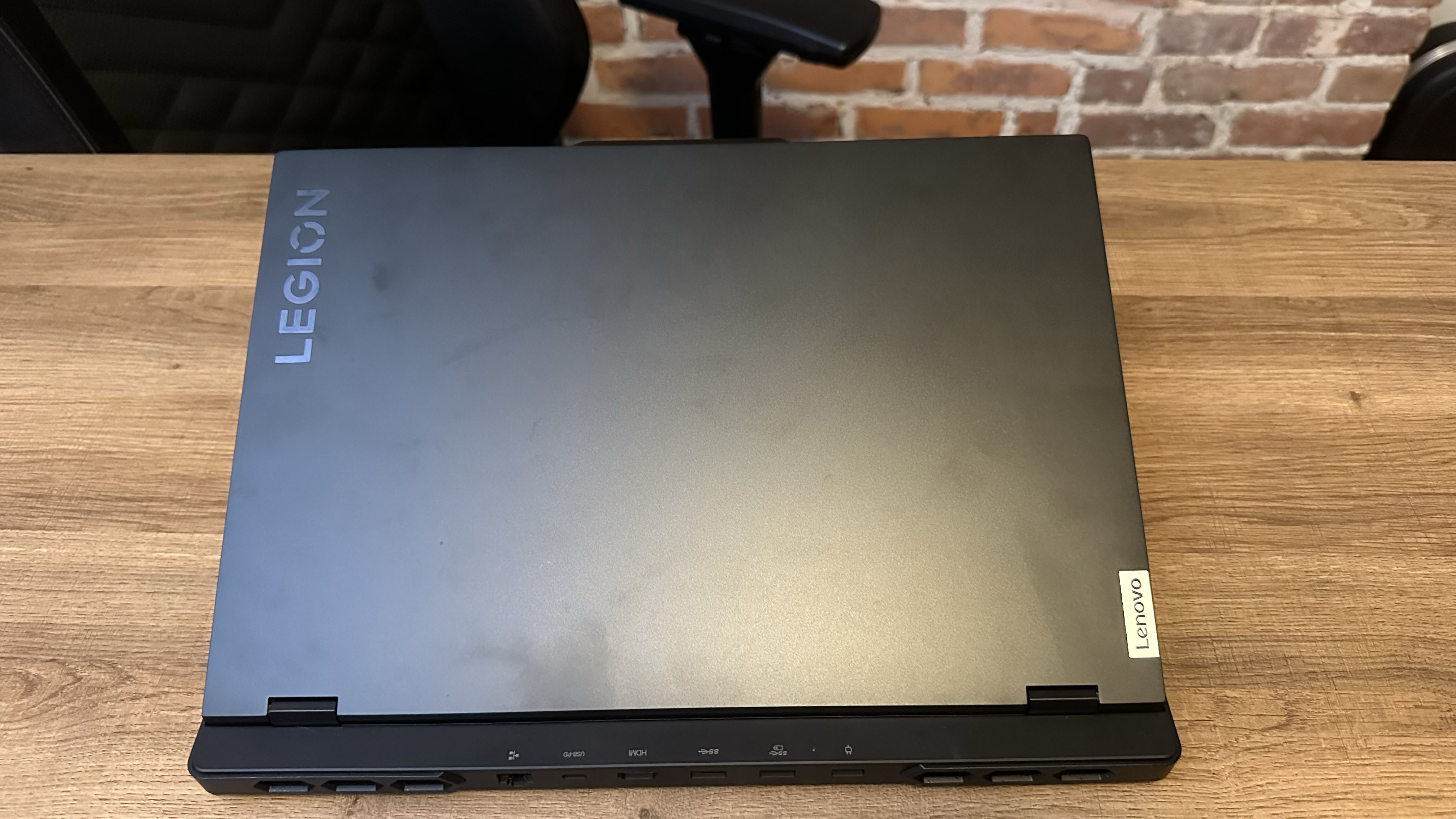
Overall, the Legion Pro 7i (Gen 9) design is nearly identical to the design of the Legion Pro 7i (Gen 8), especially in the aesthetics. The real changes lie in the weight and dimensions.
The Legion Pro 7i (Gen 9) measures 14.3 x 10.32 x 1.01 inches and weighs 5.76 pounds, which is a smidge heavier than its predecessor, the Legion Pro 7i (Gen 8) from last year, which measures 14.3 x 10.3 x 1 inches and weighs 5.4 pounds. The Legion Pro 7i (Gen 8) we reviewed has an RTX 4070 GPU, which could account for the lighter weight.
I also compared the new Legion Pro 7i to the Alienware X16 R2 and the MSI Vector 16 HX A14VHG. The Alienware laptop is the thinner and heavier of the three, measuring 14.4 x 11.4 x 0.7 inches and weighing 5.9 pounds. Meanwhile, the MSI is the thickest and lightest of the group, measuring 14.05 x 11.18 x 1.12 inches and weighing just 5.1 pounds.
Lenovo Legion Pro 7i (Gen 9): Ports
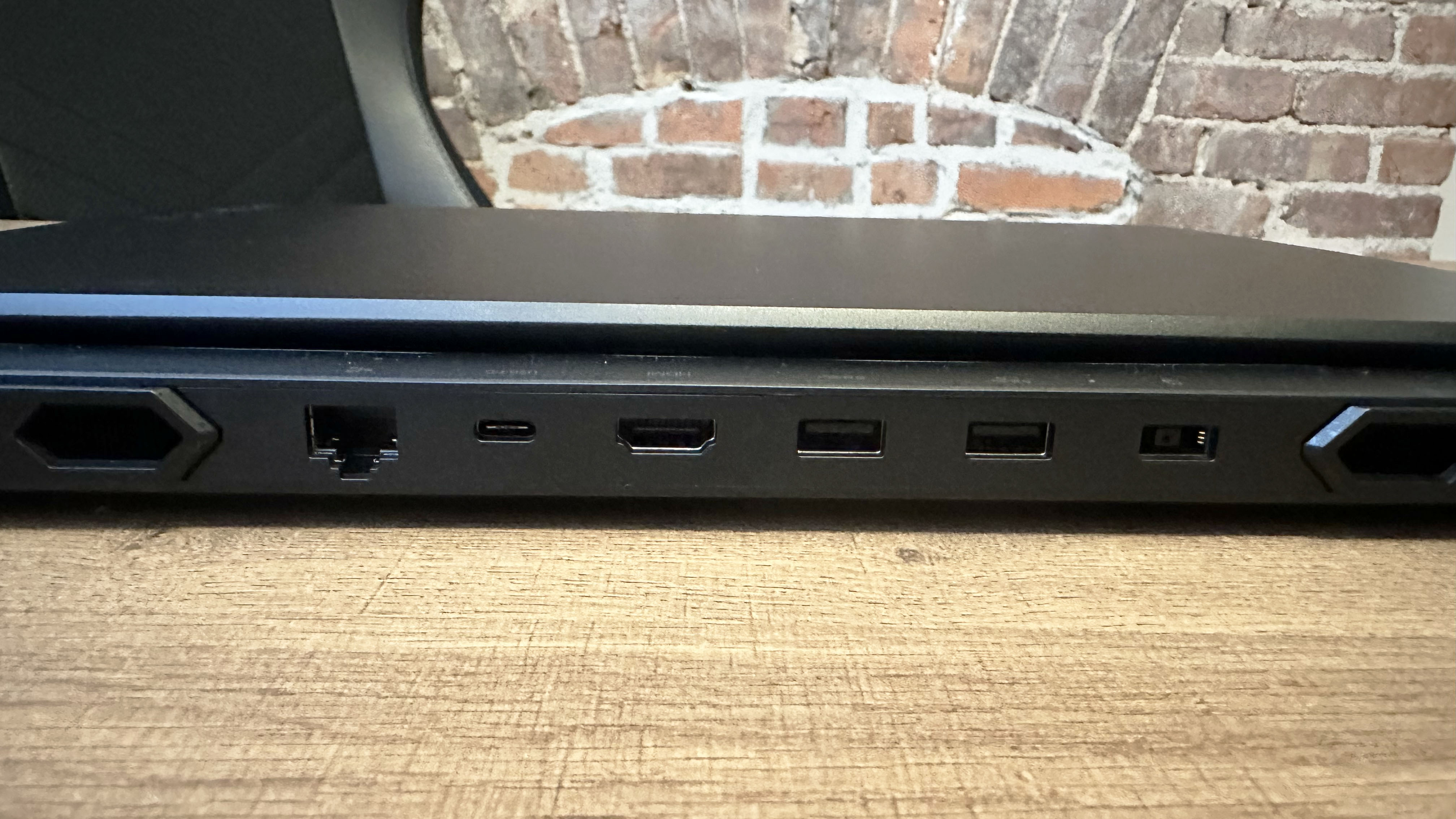
If you’re the type of gamer who loves to accessorize, the Legion Pro 7i (Gen 9) has you covered.
If you’re the type of gamer who loves to accessorize, the Legion Pro 7i (Gen 9) has you covered. The chunky chassis is covered in ports on the left, right, and rear sides.
On the left side, the Legion has one USB-C 3.2 Gen 2 port with DisplayPort 1.4 and 140W power delivery support and a USB-A 3.2 Gen 1 port. On the right side, the Legion Pro 7i has one USB-A 3.2 Gen 1 port, an electronic e-shutter switch, and a 3.5mm audio combo jack.
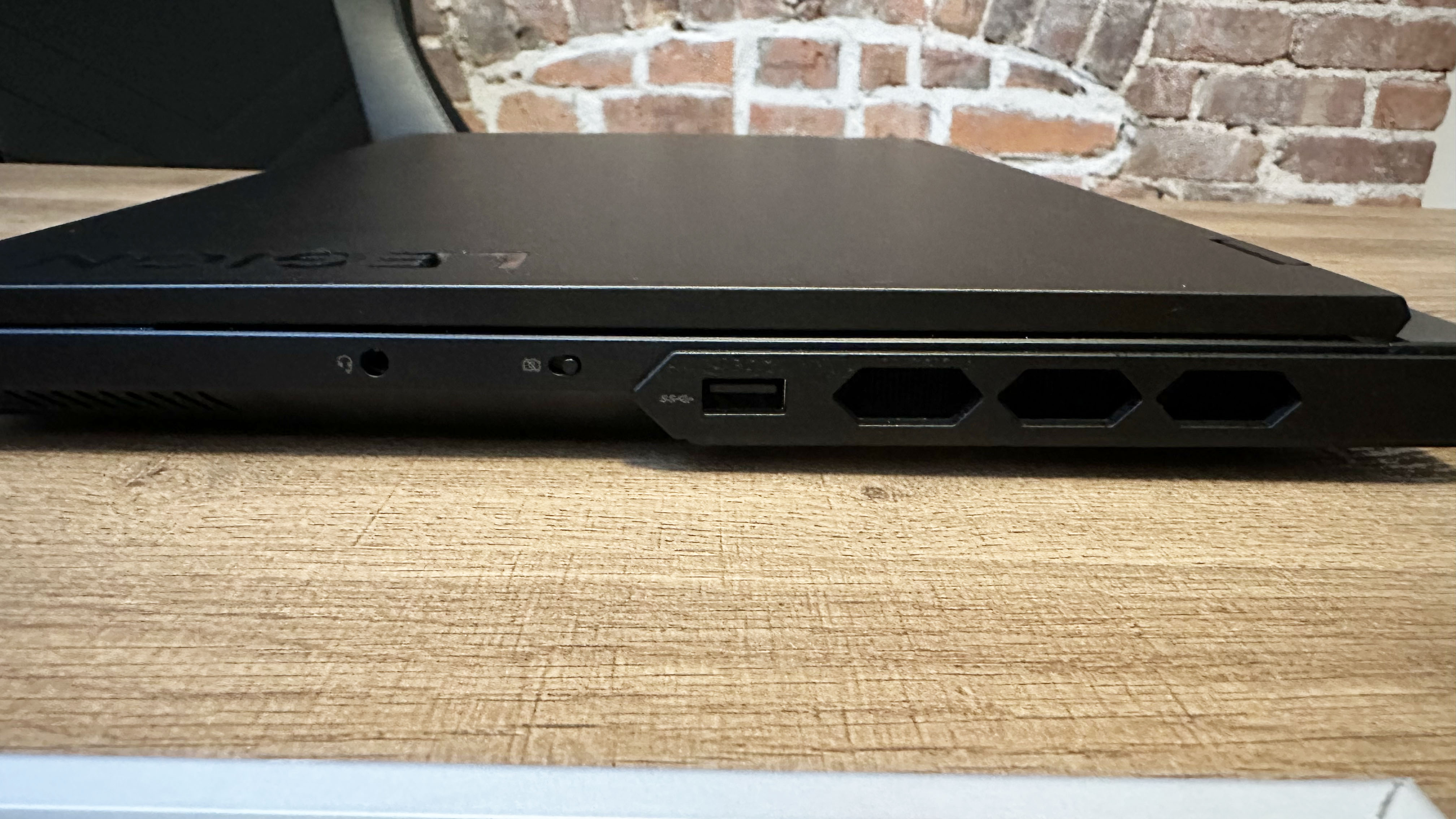
Finally, on the rear side of the laptop, the Legion sports a power input, one USB-C 3.2 Gen 2 port with DisplayPort 1.4 and 140W power delivery support, two more USB-A 3.2 Gen 1 ports, an HDMI 2.1 port, and an Ethernet RJ45 port.

Even if you’re running a multi-monitor configuration, it's unlikely you’ll need additional connections with the Legion Pro 7i.
Lenovo Legion Pro 7i (Gen 9): Display
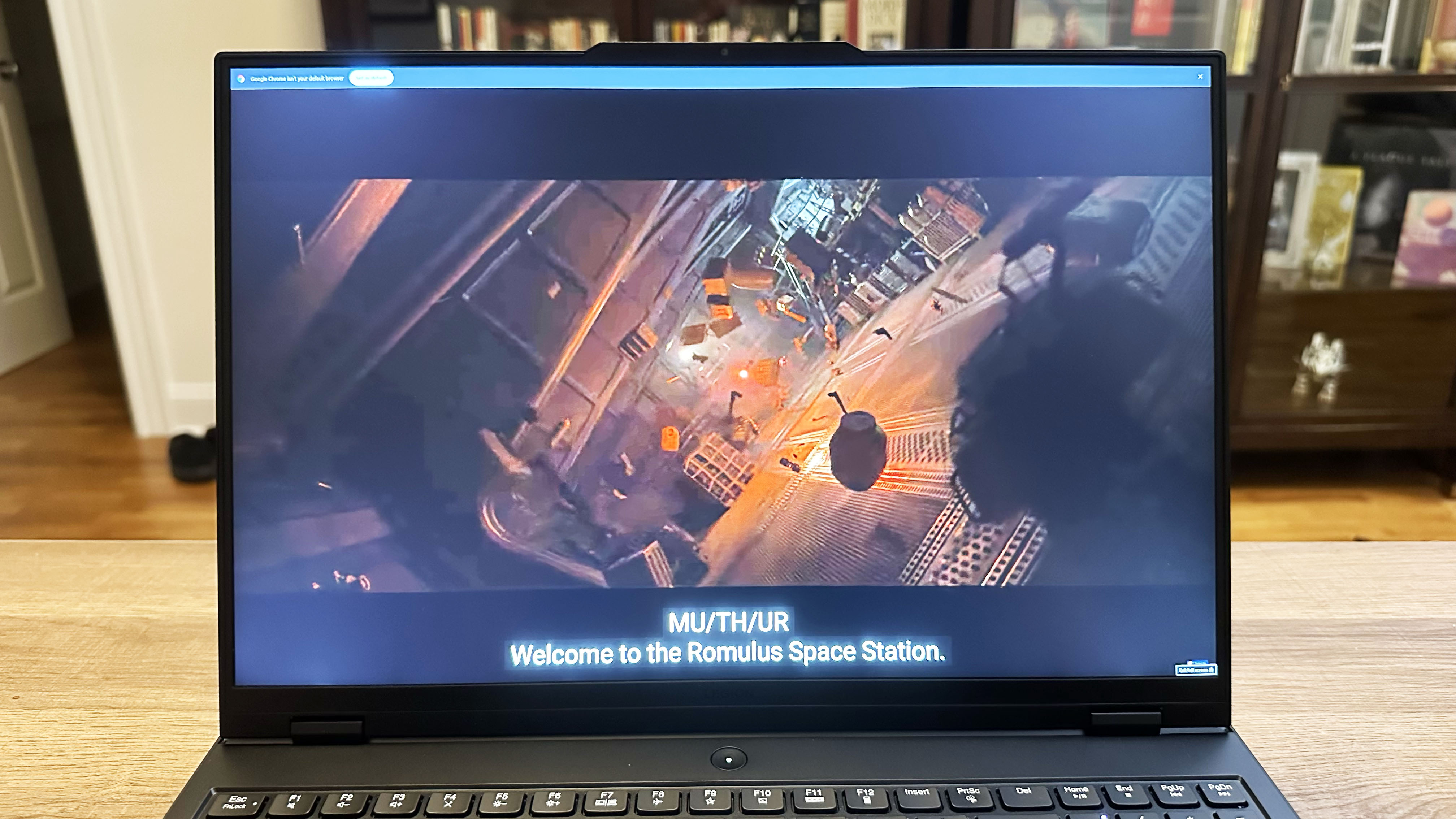
Gaming laptops need to have solid performance power and solid graphics, but even the best-specced gaming laptop can suffer from a poor display. Thankfully, the 16-inch WQXGA IPS panel on the Lenovo Legion Pro 7i (Gen 9) is stunningly vivid and features HDR400 support for an even better gaming experience.
To test the display, I booted up the final trailer for Alien: Romulus, which includes several exterior space scenes, dimly lit interior shots inside the space craft, and quick cuts between scenes. The Legion Pro 7i did a fantastic job maintaining the eerie and beautiful atmosphere of the Alien: Romulus trailer, especially in the dark interior close-up shots.
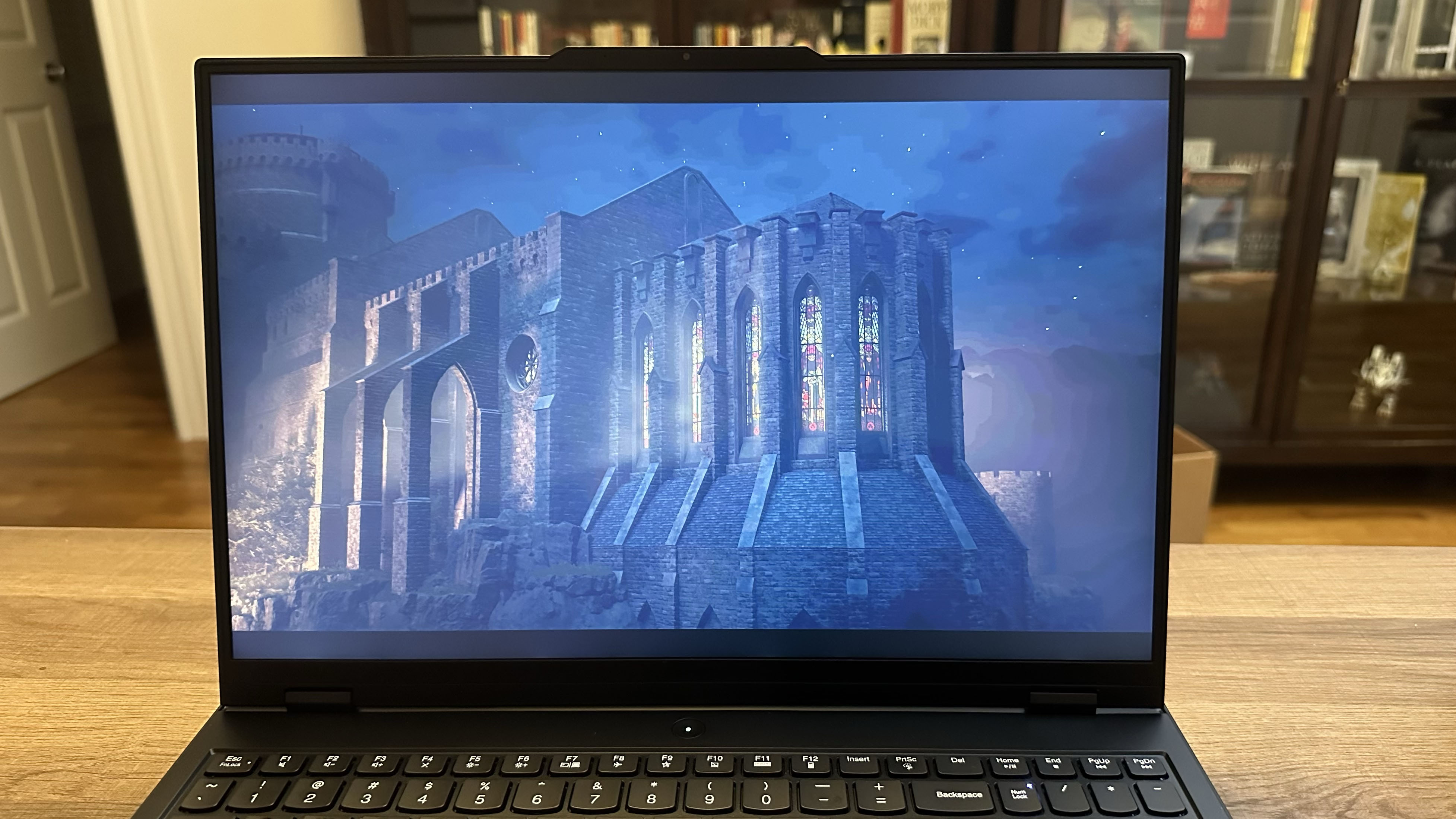
Lenovo claims the Legion Pro 7i (Gen 9) can cover 100% of the DCI-P3 color gamut, with a 500 nit max brightness, and supports HDR 400. That’s not too far off what we found in our lab. While we don’t always run our gaming laptops through our HDR test suite, the Legion Pro 7i (Gen 9) maintained an HDR brightness max of 473 across all three test patterns: 10%, 40%, and 100%.
Regarding display panel brightness, the Legion Pro 7i (Gen 9) maintained an average max brightness of 456 nits though that is a bit below Lenovo’s 500 nit claim. The Legion Pro 7i (Gen 8) was a bit brighter, averaging 488 nits, while the MSI Vector 16 HX was the brightest at 495 nits. The Alienware X16 R2 was the dimmest of the four laptops, averaging just 334 nits.
The Legion Pro 7i (Gen 9) took the lead in vibrancy, covering 108.7% of the DCI-P3 color gamut with a Delta-E accuracy of 0.24. The MSI Vector 16 HX came in just below the Legion Pro 7i (Gen 9), with 108.2% DCI-P3 gamut coverage and an accuracy of 0.25. The Alienware X16 and Legion Pro 7i (Gen 8) fell well behind, covering just 78.9% and 78.1% of the DCI-P3 color gamut, respectively.
Lenovo Legion Pro 7i (Gen 9): Keyboard and touchpad
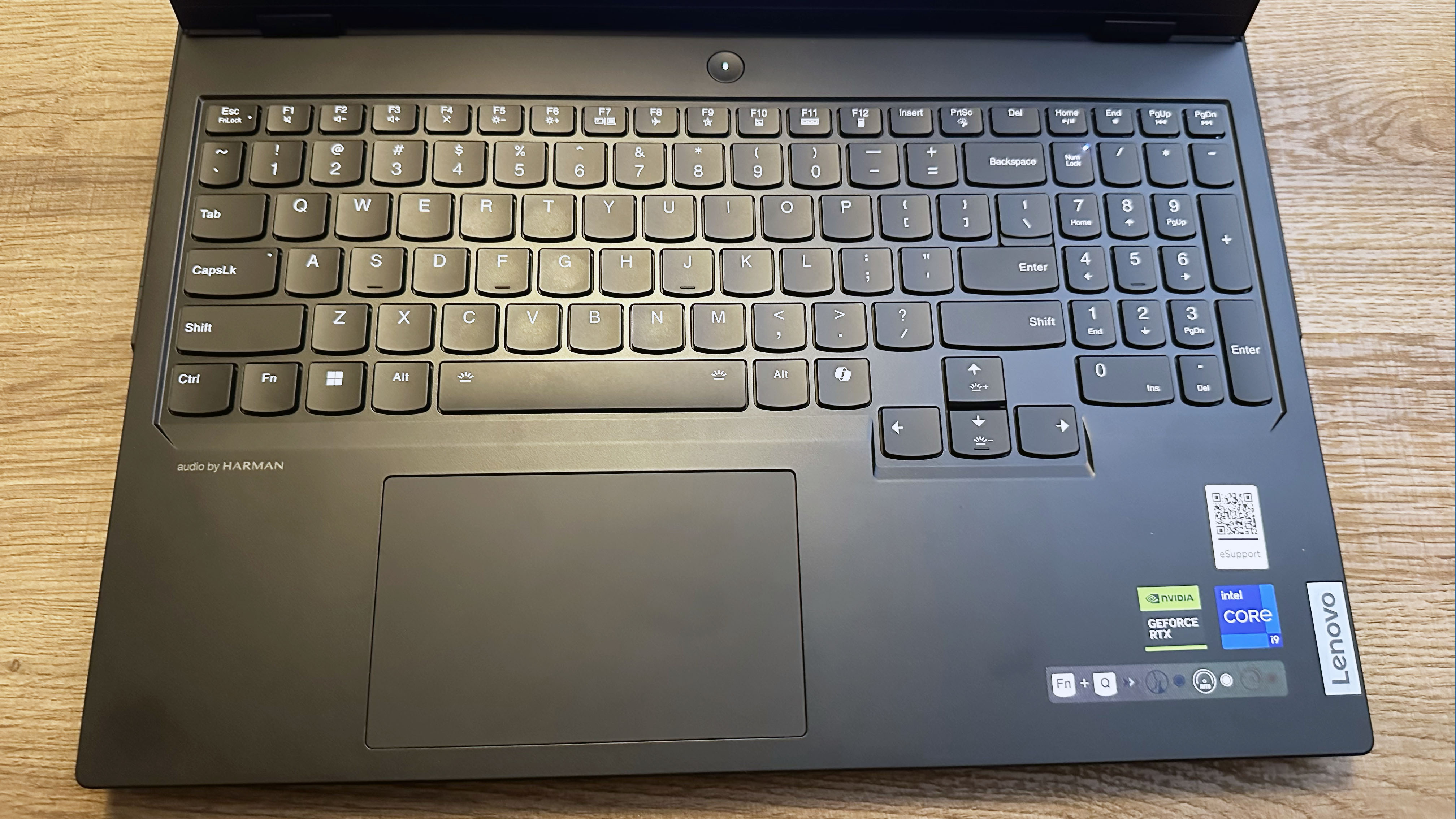
The Legion Pro 7i's widely spaced keys are ideal for gaming and making sure you’re primed to hit ‘F’ in the chat should the need arise. The key actuation is crisp, with a nice tactile spring. The Legion Pro 7i features per-key RGB lighting on the keyboard, with Legion Spectrum RGB software support to customize your lighting configuration. The keyboard also boasts 100% anti-ghosting and 1.5mm key travel.
The Legion Pro 7i's widely spaced keys are ideal for gaming and making sure you’re primed to hit ‘F’ in the chat should the need arise.
On the 10FastFingers advanced typing test, I averaged 87 words per minute (WPM), just slightly below my 88 WPM average on my MacBook Pro 14. So, you shouldn’t notice much of a hit to your typing experience.
The touchpad is decently well-sized, measuring 4.7 x 2.9 inches. The touchpad isn’t the most massive out there, but it fits well on the Legion Pro 7i’s chassis and gives you more than enough room for some fine maneuvering without the need for a mouse.
Lenovo Legion Pro 7i (Gen 9): Audio
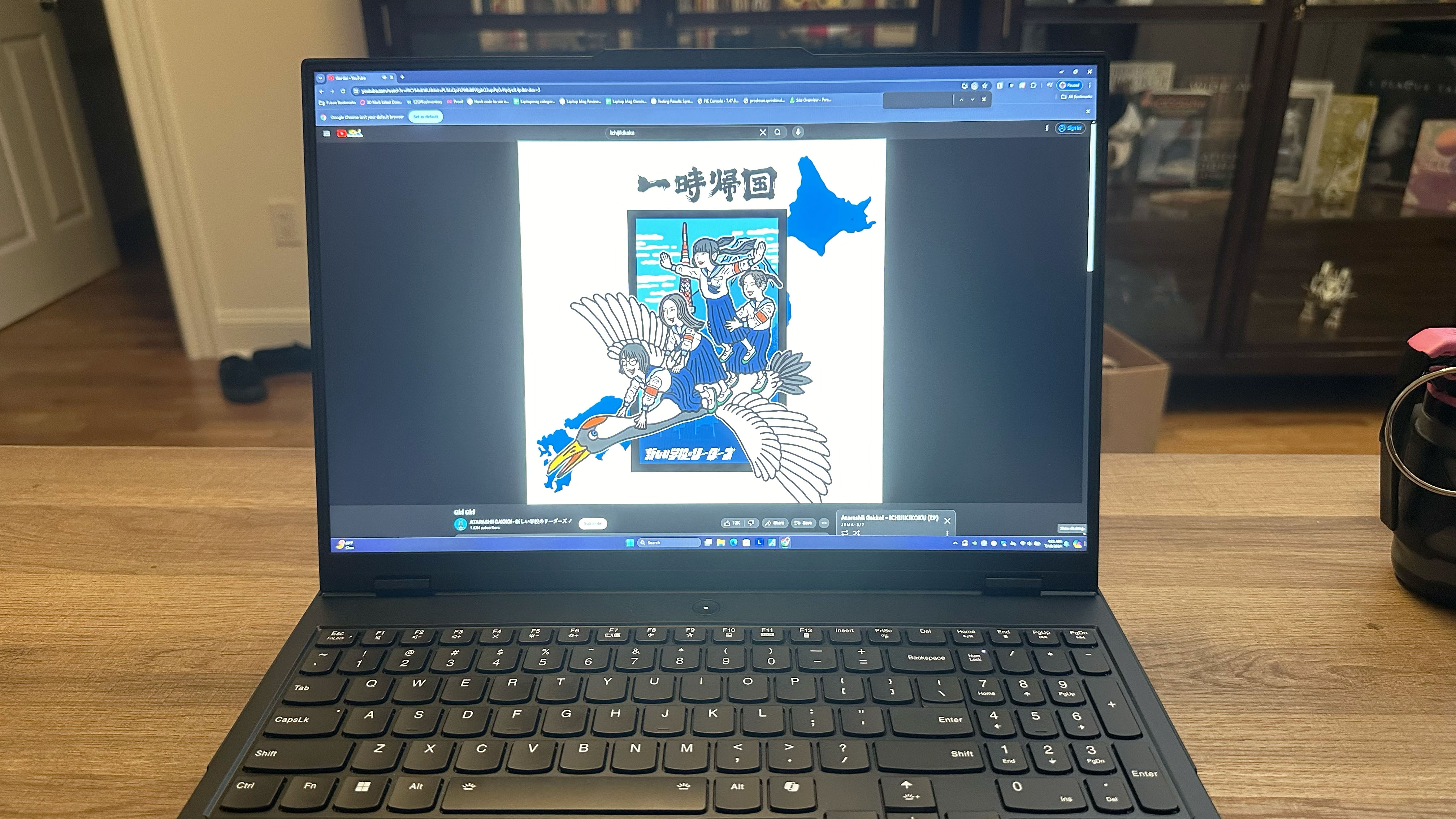
While gaming laptops don’t need great audio, the Legion Pro 7i has some incredibly loud speakers onboard. The Harman® Super Linear Speaker System features two woofers and two tweeters, supported by a smart amp, and produces powerful, dynamic sound.
Listening to JPop girl group Atarashii Gakko!’s “Giri Giri,” I was impressed to hear that the sound quality remained crisp and clear even at max volume.
While gaming laptops don’t need great audio, the Legion Pro 7i has some incredibly loud speakers onboard.
This carried over to the gaming side, where even at 40% volume, the Legion’s audio could easily outpower the fan noise.
Of course, if you want immersive surround sound, you’ll always be better served with one of the best computer speakers, but they aren’t a must with the Legion Pro 7i.
Lenovo Legion Pro 7i (Gen 9): Graphics and gaming performance
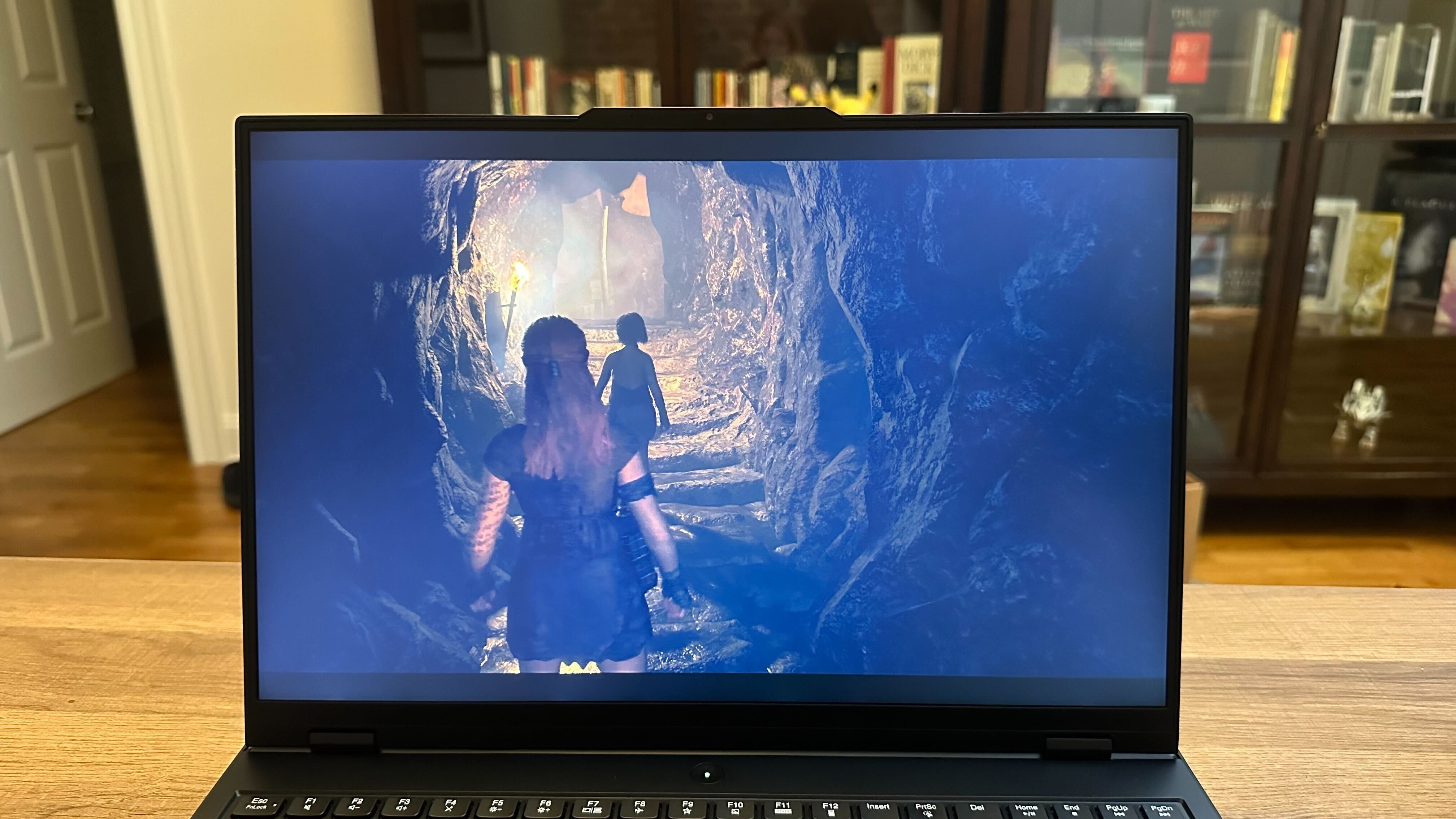
The Lenovo Legion Pro 7i is a gamer’s gaming laptop. It’s a large and in-charge desktop replacement laptop with the specs to prove it. With an Intel Core i9-14900HX processor, Nvidia RTX 4080 GPU, and 32GB of memory, the Legion will not struggle with many games.
I started a new save on Dragon’s Dogma II to see how well the Legion Pro 7i handled the dark underground cells of the prologue level, and I was not disappointed. Between the vivid HDR display and the RTX 4080 GPU, the Legion Pro 7i easily handled the cells' deep shadows and bright torchlight. I also spent a lot of time playing through the Final Fantasy XIV: Dawntrail expansion on the Legion Pro 7i, and the graphic updates looked beyond impressive. Between the vivid colors and crisp details, Final Fantasy XIV hasn’t ever looked better.
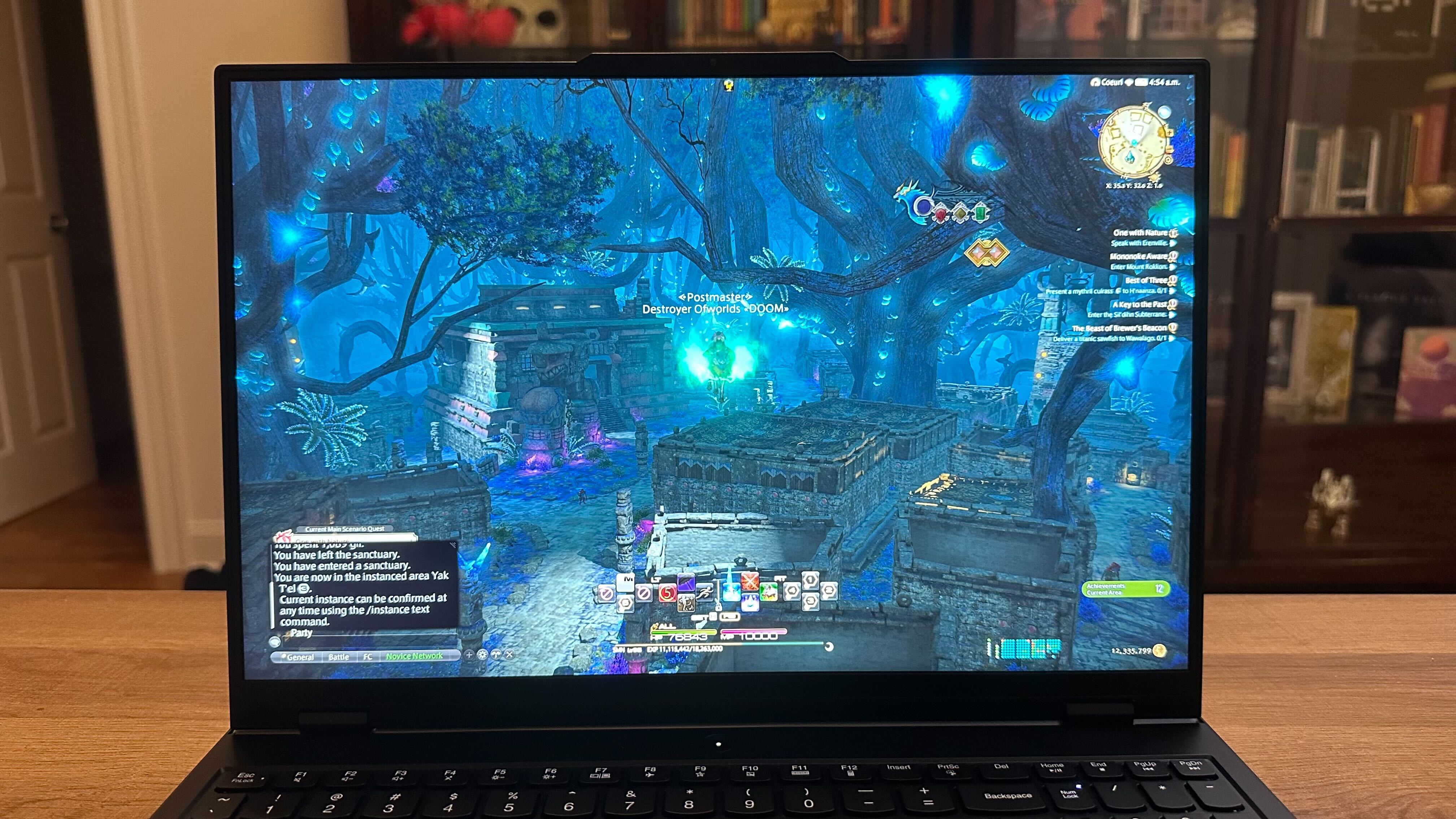
The Lenovo Legion Pro 7i is a gamer’s gaming laptop.
When it comes to benchmarks, the Legion Pro 7i held its own with aplomb. The Legion Pro 7i (Gen 9) was well within the range of expectations on the 3DMark benchmark suite, with an average score of 9,353 on Fire Strike Extreme Direct X 11 benchmark. The Lenovo Legion Pro 7i (Gen 8), its Intel Core i9-13900H processor, and RTX 4070 GPU averaged a score of 6,406 comparatively.
The Alienware X16 and its Intel Core Ultra 9 185H and RTX 4080 GPU averaged a score of 10,783 on Fire Strike Extreme. Meanwhile, the MSI Vector 16 and its Intel Core i9-14900HX processor and RTX 4080 GPU averaged a score of 10,244 on Fire Strike Extreme. Except for the Legion Pro 7i (Gen 8), all three laptops performed within the average range of expectation given their i9/Core Ultra 9 and RTX 4080 configurations.
We saw a similar performance spread on the Port Royal raytracing benchmark. The Legion Pro 7i (Gen 9) maintained an average of 9,493, while the Alienware X16 had the highest score on this benchmark, with an average of 11,614. The MSI Vector 16 had the second-highest score, at 10,110, while the Legion Pro 7i (Gen 8) had the lowest performance, with an average of 6,531.
For a more real-world gaming benchmark, we ran all four laptops through the Far Cry 6 benchmark on Ultra High settings at 1080p resolution. The Legion Pro 7i (Gen 9) had an average of 105 frames-per-second (FPS), which was second only to the MSI Vector 16’s 111 FPS average. The Alienware X16 (88 FPS) and Legion Pro 7i Gen 8 (97 FPS) didn’t manage to crack the 100 FPS mark.
Lastly, on the Red Dead Redemption II benchmark on Medium settings at 1080p, the Legion Pro 7i (Gen 9) maintained an average of 96.3 FPS, second only to the MSI Vector 16’s 104 FPS average. The Alienware X16 managed an average of 89.7 FPS, while the Legion Pro 7i (Gen 8) averaged just 69 FPS on this benchmark.
Lenovo Legion Pro 7i (Gen 9): Performance
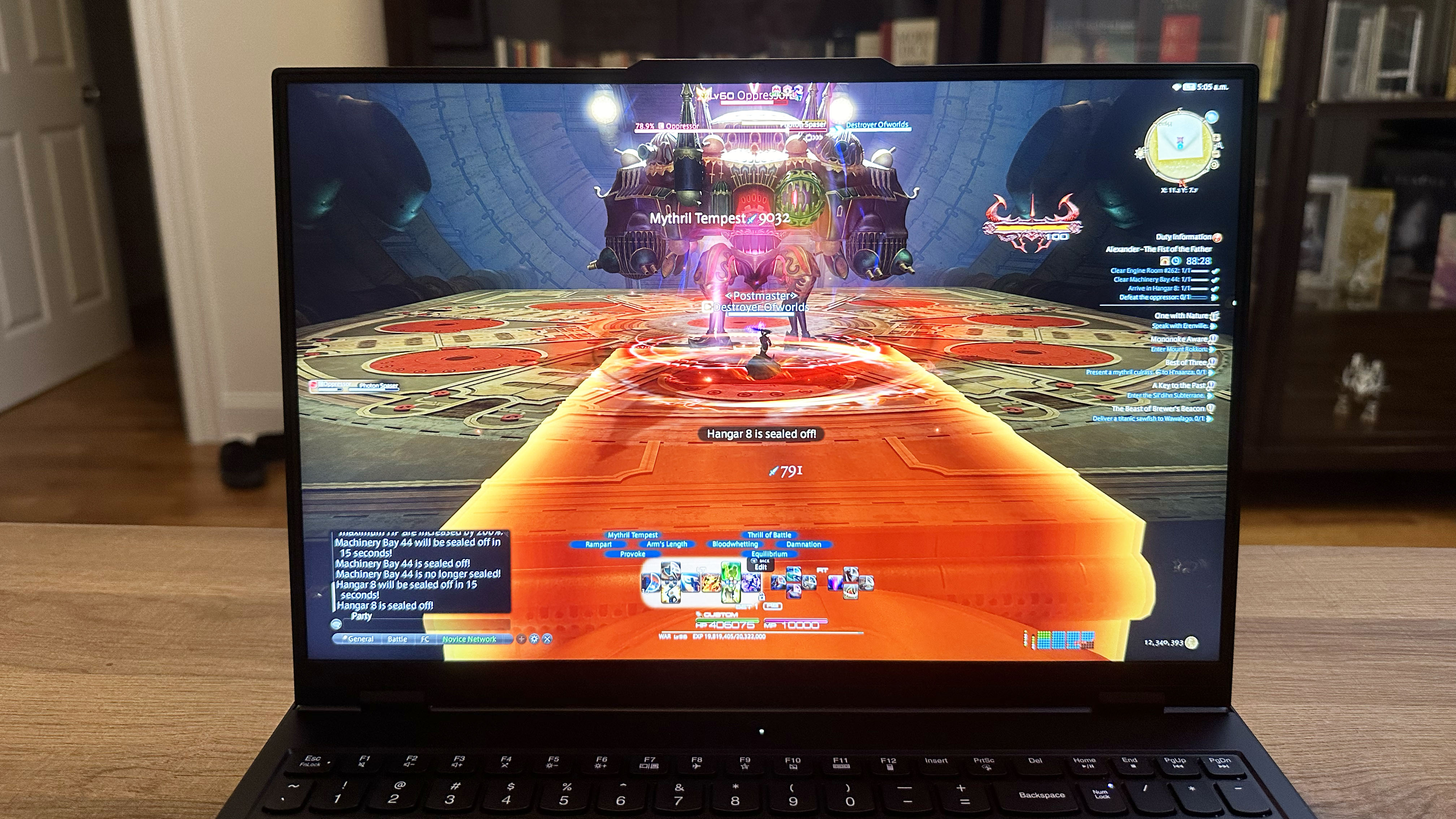
With an Intel Core i9-14900HX processor under the hood, there wasn’t a part of my average workday the Legion Pro 7i (Gen 9) couldn’t handle. No number of Chrome tabs slowed the laptop down, and even adding Adobe Photoshop to the mix didn’t cause a stutter.
On the Geekbench 6 CPU benchmark, the Legion Pro 7i (Gen 9) maintained a single-core average of 2,958 and a multicore average of 17,329. This was just behind the MSI Vector 16 and its Intel Core i9-14900HX, which held a single-core average of 3,009 and a multicore average of 18,055.
The Lenovo Legion Pro 7i (Gen 8) and its Intel Core i9-13900H averaged a single-core score of 2,855 and a multicore score of 14,740. Meanwhile, the Alienware X16 R2 and its Intel Core Ultra 9 185 H came in the bottom of the group for both single-core and multicore scores with averages of 2,452 and 13,874, respectively.
On our Handbrake 1.6 video encoding test, which tasks laptops with transcoding the 4K version of ‘Tears of Steel’ into a 1080p 30 FPS format, the Legion Pro 7i (Gen 9) was one of the fastest laptops with an encoding time of 3:11. The MSI Vector 16 was the quickest with a time of 2:37. Meanwhile the Legion Pro 7i (Gen 8) and Alienware X16 lagged behind at 3:31 and 3:57 respectively.
Finally, on our file transfer test, which times how long a laptop takes to copy a 25GB multimedia folder, the Legion Pro 7i (Gen 9) had one of the highest transfer rates, taking just 13.3 seconds to copy the folder for a transfer rate of 2,025 MBps. The Legion Pro 7i (Gen 8) was the fastest of the bunch, with a time of 12,7 seconds and a transfer rate of 2,115 MBps. The Alienware X16 was third with a time of 15.1 and a transfer rate of 1,776 MBps, while the MSI Vector 16 was the slowest with a time of 19.8 seconds and a transfer rate of 1,353 MBps.
Lenovo Legion Pro 7i (Gen 9): Battery life
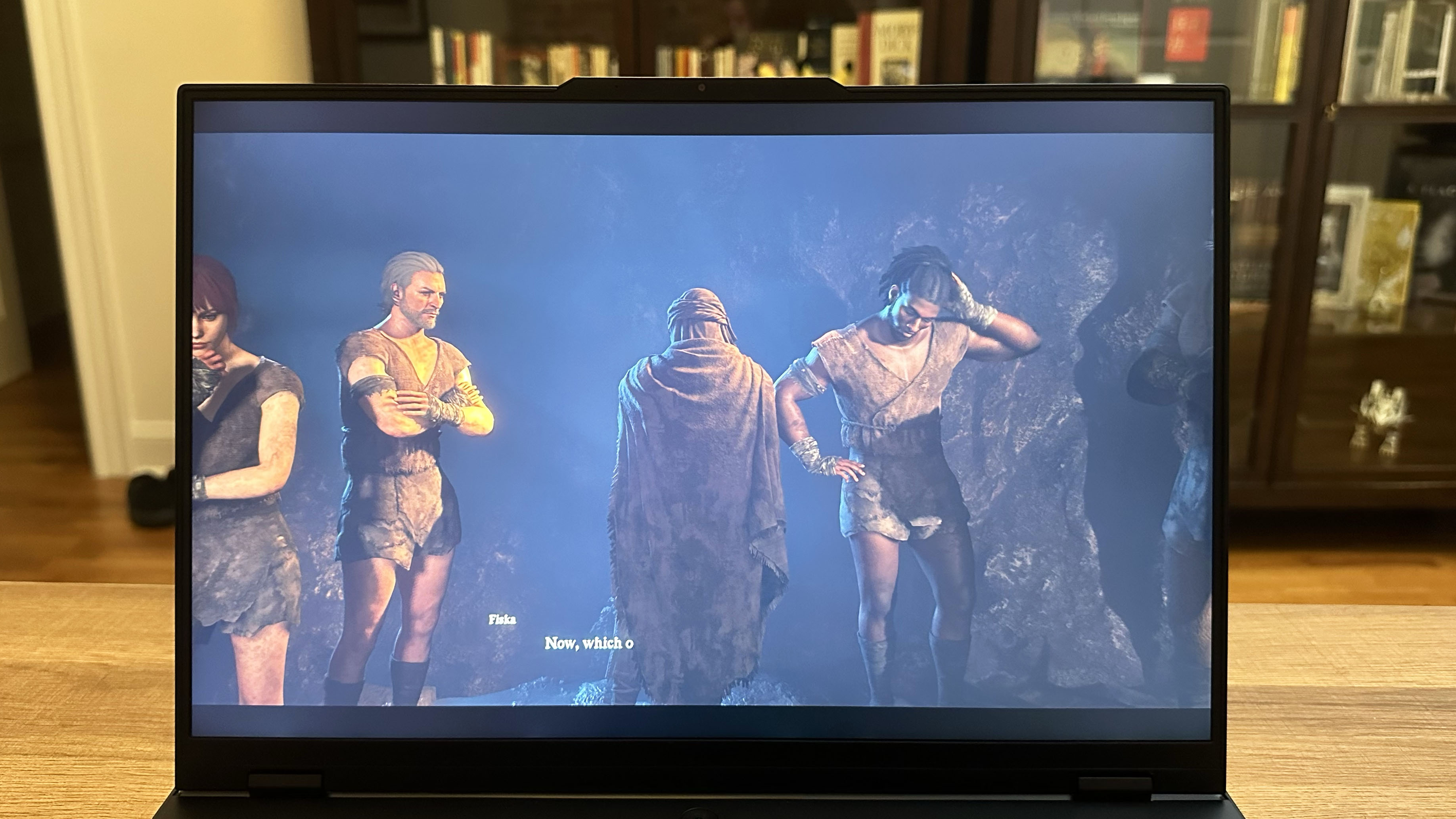
Regarding desktop replacement gaming laptops, battery life doesn’t weigh quite as much as it would on more portable machines. But a 16-inch laptop is still somewhat easy to transport. Battery life is, unfortunately, one of the biggest weaknesses of the Legion Pro 7i (Gen 9).
I attempted to take the Legion Pro 7i on a quick business trip to LA and was very quickly reminded that large gaming machines do not fly well when the laptop barely fit into my bag and ran out of battery in just a few hours. The fact that I lost about 9% of a charge by booting up the laptop, connecting to wifi, and logging into my work email really hammered home the idea that this is not a computer designed for life away from outlets. Our lab testing easily backed up this fact.
Battery life is, unfortunately, one of the biggest weaknesses of the Legion Pro 7i (Gen 9)
On the Laptop Mag battery test, we set the laptop to 150 nits of brightness and set it to surf the web through a series of static, dynamic, and video pages until it dies. The Legion Pro 7i (Gen 9) lasted only 4 hours and 29 minutes on that battery test which is over an hour less than the Legion Pro 7i (Gen 8), which lasted 5:46. Both the Alienware X16 (6:31) and MSI Vector 16 (6:32) put both Legion laptops to shame though none of these laptops are winning any awards for battery life any time soon.
Things did not get better with the PCMark 10 Gaming battery test, where the Legion Pro 7i (Gen 9) lasted just 51 minutes at 150 nits of brightness. The Legion Pro 7i (Gen 8) lasted just a bit longer at 1:07, as did the Alienware X16, which managed to eke out a 1:19 battery life. The MSI Vector 16 HX was the longest-lived of the bunch, with a 1:38 time on the PCMark 10 Gaming battery test.
Lenovo Legion Pro 7i (Gen 9): Webcam

The webcam is a bit grainy, as it is only a 1080p camera, but the color accuracy was solid, with no color bleed from the exposed brick wall that served as my webcam background.
Of course, if you plan to use the Legion Pro 7i to run a stream or for frequent video calls, I recommend getting one of the best webcams to get a less splotchy feed.
Lenovo Legion Pro 7i (Gen 9): Heat
Gaming laptops often put off a lot of heat, especially while gaming. At Laptop Mag, we test gaming laptops’ cooling systems by looping the Metro Exodus Enhanced Edition benchmark 5 times on the Extreme preset, then measuring the temperature of the touchpad and G/H keys and finding the hottest surface.
The Legion Pro 7i stayed relatively cool near the touchpad, measuring just 79.5 degrees Fahrenheit. The G/H keys, on the other hand, were quite a bit hotter at 104 degrees which is well above the Laptop Mag comfort threshold of 95 degrees Fahrenheit. The hottest point on the Legion Pro 7i measured at 107 degrees along the middle center underside of the laptop. So definitely don’t game with the Legion Pro 7i on your lap.
Lenovo Legion Pro 7i (Gen 9): Software and warranty
The Legion Pro 7i comes with Windows 11 Home pre-installed, which includes a trial version of Microsoft Office, and Lenovo has also added a few other applications like Lenovo Vantage, Legion Zone, Super Resolution, Tobii Horizon, the X-Rite Color Management Tool, and a trial of McAfee LiveSafe anti-virus software.
The Legion Pro 7i comes with a one-year warranty of Legion Ultimate Support. To see how Lenovo’s customer service performed in our annual ranking, check out our Tech Support Showdown list.
Bottom line
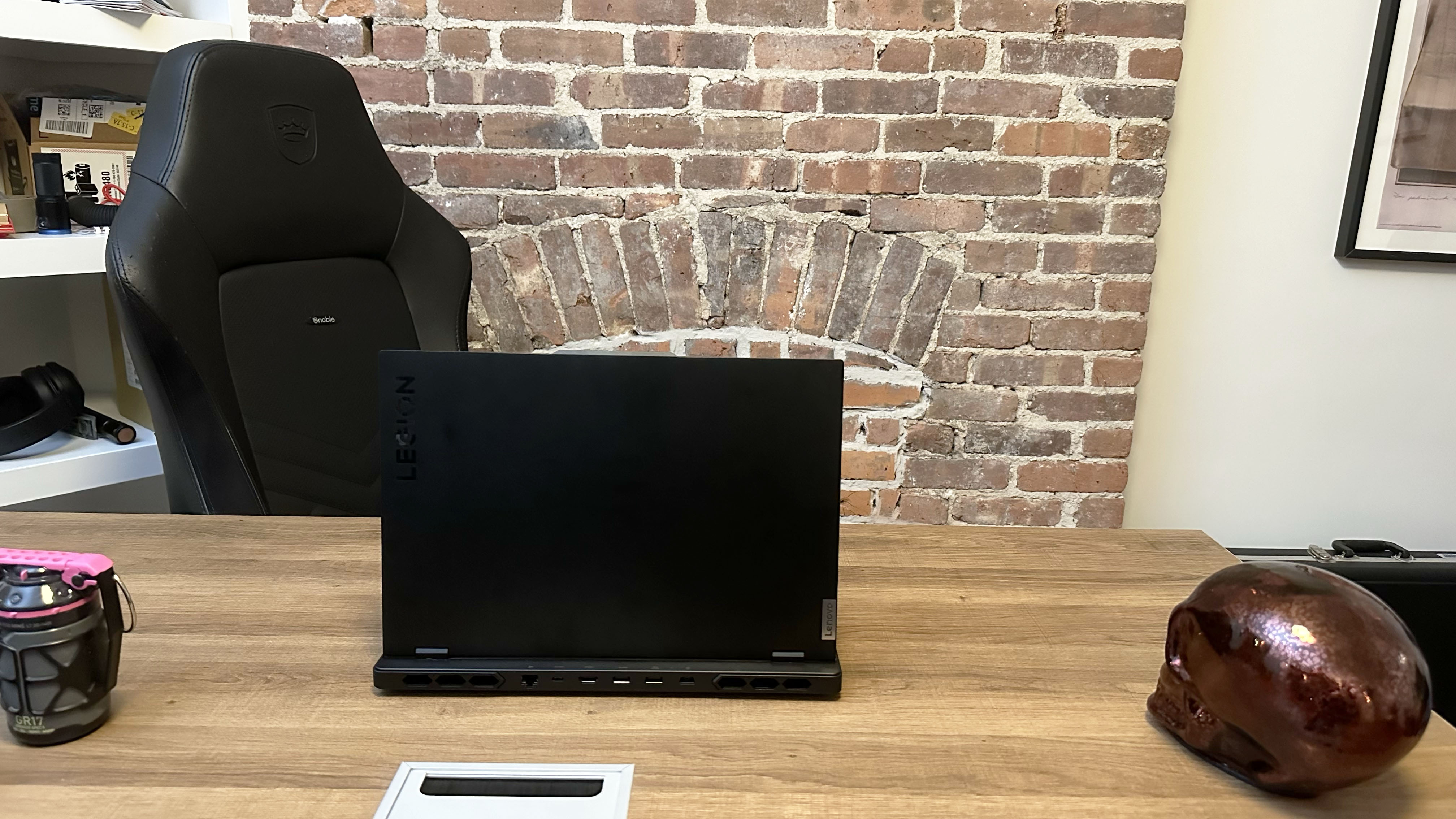
Assuming you don’t plan to use the Legion Pro 7i as your travel laptop, there really isn’t much reason not to buy it. It isn’t the priciest gaming laptop out there, and you get quite the bang for your buck with an i9-14900H and RTX 4080 combo. Plus, it has some serious audio power and a fantastic display.
If you need to take the Legion Pro 7i out and about, it only weighs 5.76 pounds. Sure, it may not fit in every laptop bag, but unlike its 18-inch counterparts, it should fit in most of them.







